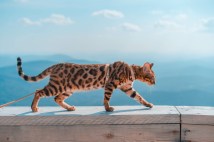The drake bird is a fascinating creature known for its distinctive features and behaviors. Whether you are an avid bird watcher or simply curious about wildlife, understanding what makes the drake bird unique can enhance your appreciation of nature.
What Is a Drake Bird?
A drake is specifically a male duck, often recognized by its vibrant plumage and distinct calls. Unlike female ducks, which are usually more subdued in color to help with camouflage, drakes tend to have brighter feathers that play a role in attracting mates during the breeding season.
Physical Characteristics of Drake Birds
Drake birds typically showcase striking colors such as iridescent greens, blues, and browns depending on their species. They usually have a robust body, webbed feet for swimming, and a broad bill designed for dabbling in water to find food. The plumage patterns vary widely among species but often include glossy feathers that shimmer in sunlight.
Behavioral Traits of Drakes
Drakes are known for their territorial behavior during mating seasons. They may perform elaborate courtship displays including head bobbing and vocalizations to attract females. Outside of mating periods, they often join flocks with females and other ducks for feeding and migration.
Habitat and Diet
Drake birds inhabit freshwater lakes, rivers, marshes, and ponds where there is abundant plant life. Their diet mainly consists of aquatic plants, insects, small fish, and algae. Being omnivorous allows them flexibility in feeding based on availability throughout the seasons.
Conservation Status and Importance
Many species of ducks including drakes play essential roles in aquatic ecosystems by controlling insect populations and spreading seeds through their droppings. While some species face threats from habitat loss and pollution, conservation efforts focused on wetland preservation help protect these beautiful birds for future generations to enjoy.
Understanding the unique characteristics of the drake bird not only enriches our knowledge about wildlife but also highlights the importance of preserving natural habitats where these captivating creatures thrive.
This text was generated using a large language model, and select text has been reviewed and moderated for purposes such as readability.






